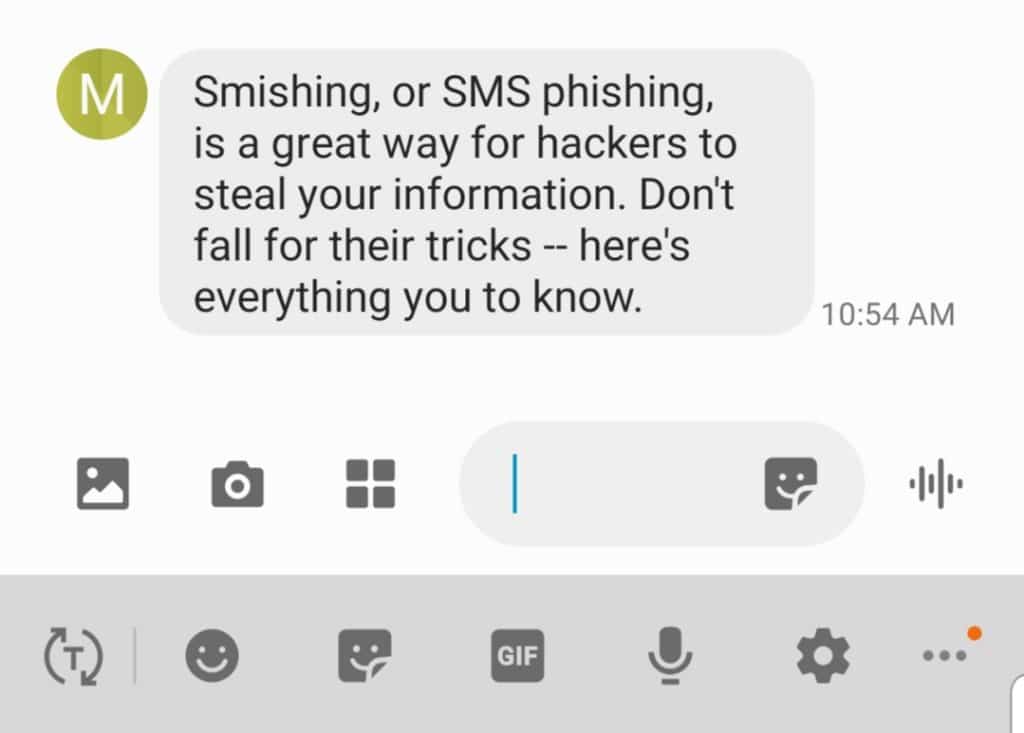What is Smishing?
Have you ever received a text message claiming to be from your bank that asks you to click on a link or enter personal information? If so, you may have been the target of a smishing attack. Smishing – a portmanteau of “SMS” and “phishing”—uses text messages instead of emails like phishing does in order to steal sensitive information by tricking people into responding with confidential data.
How Does Smishing Work?
Smishing works similarly to phishing, but instead of using email messages, it uses text messages. Cybercriminals send out a text messages pretending to be from a legitimate entity, such as a bank or other financial institution. The texts often contain links that lead victims to malicious websites or ask them to enter personal information. Once the victim enters their data, it is sent directly to the criminal who can use it for identity theft and financial fraud.
Common Signs of Smishing Scams
There are certain signs that may indicate that you are being targeted by a smishing scam. Most notably, any text message asking for personal information should be viewed with suspicion; no reputable company will ever ask you to confirm your account details via an SMS. Additionally, any SMS containing spelling errors or grammatical mistakes is likely suspect. Most companies take great care when crafting their communications. Finally, any message containing suspicious links should be avoided at all costs. These links could lead directly to malicious websites designed to steal your data.
What Can You Do About Smishing?
The best way to protect yourself against smishing scams is to exercise caution when responding (or not responding) to unsolicited text messages. If you receive a suspicious-looking message purporting to be from one of your service providers or banks, contact them directly via another channel—such as the telephone—to verify the authenticity of the message before taking any action. Additionally, make sure that your mobile device has up-to-date anti-malware software installed in order to detect and remove any malicious applications that may have been installed without your knowledge as part of a smishing attack.
Conclusion:
Smishing is an increasingly common form of cybercrime that uses SMS messages instead of emails in order to trick victims into providing confidential information such as passwords and credit card numbers. To stay ahead of the game when it comes to protecting yourself against smishers, always be on alert for any suspicious-looking messages, and never click on links included in those messages! Additionally, make sure that you have anti-malware software installed on all your mobile devices so they can detect and remove malicious applications before they cause too much damage. By following these simple tips, you can help keep yourself safe from potential smishers!
Get in touch
Learn more about our smishing test options here. Is this not what you’re looking for? Don’t panic, we of course also work on a per-item basis. Please contact us using the form below. We’ll be happy to answer all your questions!

